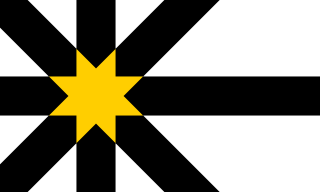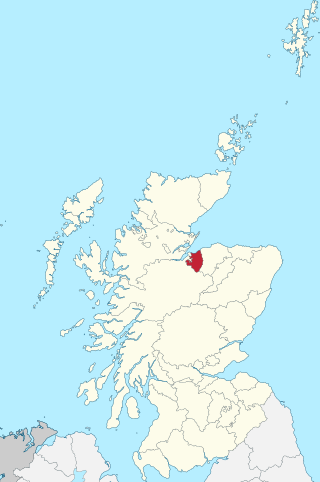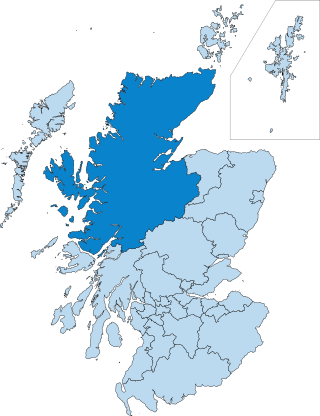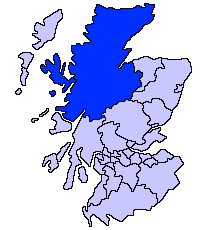
Local government in Scotland comprises thirty-two local authorities, commonly referred to as councils. Each council provides public services, including education, social care, waste management, libraries and planning. Councils receive the majority of their funding from the Scottish Government, but operate independently and are accountable to their local electorates. Councils raise additional income via the Council Tax, a locally variable domestic property tax, and Business rates, a non-domestic property tax.

Sutherland is a historic county, registration county and lieutenancy area in the Highlands of Scotland. Its county town is Dornoch. Sutherland borders Caithness and Moray Firth to the east, Ross-shire and Cromartyshire to the south and the Atlantic to the north and west. Like its southern neighbour Ross-shire, Sutherland has some of the most dramatic scenery in Europe, especially on its western fringe where the mountains meet the sea. These include high sea cliffs, and very old mountains composed of Precambrian and Cambrian rocks.

Caithness is a historic county, registration county and lieutenancy area of Scotland.

The County of Nairn is a historic county, registration county and lieutenancy area of Scotland. The county was used for local administration until the county council, based at the county town of Nairn, was abolished in 1975 under the Local Government (Scotland) Act 1973, the area becoming one of the eight districts of the two-tier Highland region. This arrangement ended in 1996 when the Highland council area was made a unitary authority.
The local government areas of Scotland were redefined by the Local Government (Scotland) Act 1973 and redefined again by the Local Government etc (Scotland) Act 1994.

Caithness and Sutherland was a county constituency of the House of Commons of the Parliament of the United Kingdom from 1918 to 1997. It elected one Member of Parliament (MP) by the first past the post system of election.

The politics of the Highland council area in Scotland are evident in the deliberations and decisions of the Highland Council, in elections to the council, and in elections to the House of Commons of the Parliament of the United Kingdom (Westminster) and the Scottish Parliament (Holyrood). In the European Parliament the area was within the Scotland constituency, which covers all of the 32 council areas of Scotland.

The third set of Highland Council wards, 22 in number, became effective for election purposes in 2007, for the fourth general election of the Highland Council. The new wards were created under the Local Governance (Scotland) Act 2004, and are as defined in recommendations of the Local Government Boundary Commission for Scotland.

The second set of Highland Council wards, 80 in number, became effective for election purposes in 1999, for the second general election of the Highland Council, and were used also for the third general election in 2003. These wards replaced 72 older wards, and were themselves replaced by a set of 22 wards for the fourth general election in 2007.

The Highland Council, the political body covering the Highland local authority created in 1995, comprises 21 wards, each electing three or four councillors by the single transferable vote system, which creates a form of proportional representation. The total number of councillors is 74, and the main meeting place and main offices are at the Highland Council Headquarters in Glenurquhart Road, Inverness.
Elections to Strathclyde Regional Council were held on Tuesday 7 May 1974, on the same day as the eight other Scottish regional elections. This was the first election to the regional council following the implementation of the Local Government (Scotland) Act 1973.

Blantyre is one of the 20 electoral wards of South Lanarkshire Council. Re-established in 2007, the ward initially elected four councillors using the single transferable vote electoral system before a boundary review in 2017 reduced the number of councillors to three. It covers an area with a population of 15,968 people.

The fifth set of Highland Council wards, 21 in number, became effective for election purposes in 2017, for the fifth general election of the Highland Council. The new wards were created under the Local Governance (Scotland) Act 2004, and are as defined in recommendations of the Local Government Boundary Commission for Scotland. The commission's report includes maps of the new wards
Generally, descriptions above are inferred from the maps.
Elections to Cumnock and Doon Valley District Council were held on 7 May 1974, on the same day as the other Scottish local government elections. This was the first election to the district council following the implementation of the Local Government (Scotland) Act 1973.
Elections to Kilmarnock and Loudoun District Council were held on 7 May 1974, on the same day as the other Scottish local government elections. This was the first election to the district council following the implementation of the Local Government (Scotland) Act 1973.
Cumnock Burgh was one of 10 electoral wards of Cumnock and Doon Valley District Council. Created in 1974, the ward elected one councillor using the first-past-the-post voting electoral system.
Old Cumnock Parish was one of 10 electoral wards of Cumnock and Doon Valley District Council. Created in 1974, the ward elected one councillor using the first-past-the-post voting electoral system.
Elections to Sutherland District Council were held on 3 May 1977, on the same day as the other Scottish local government elections. This was the second election to the district council following the local government reforms in 1974.
Elections to Sutherland District Council were held on 3 May 1984, on the same day as the other Scottish local government elections. This was the fourth election to the district council following the local government reforms in the 1970s.
Elections to Hamilton District Council were held on 7 May 1974, on the same day as the other Scottish local government elections. This was the first election to the district council following the implementation of the Local Government (Scotland) Act 1973.








